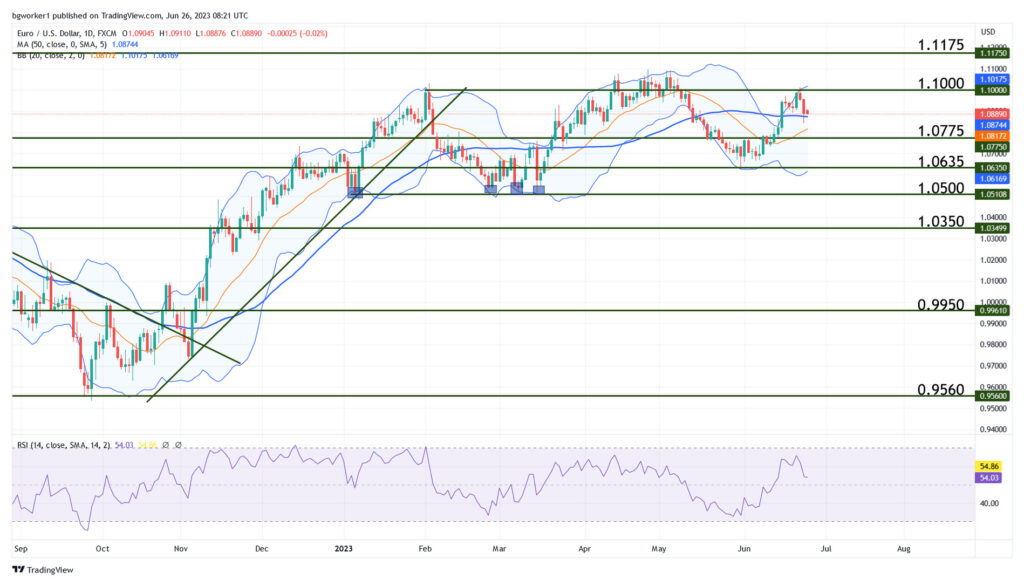Navigating Eurozone Challenges: Interest Rates and Growth
1.1000 – An Insurmountable Barrier?
The euro is currently changing hands around $1.0890, staying below its recent peak at $1.1000 reached on June 22. An important role in this is played by concerns about higher interest rates in the Eurozone and their effects on the economy.
According to the PMI data released on Friday, there has been a noticeable slowdown in the growth of the Eurozone’s businesses in June. Germany’s expansion has cooled off, and French business activity has actually diminished for the first time in five months.
Adding to the unease created by the slowdown in the private sector, investors have been trying to make sense of recent actions taken by central banks, which proved more hawkish than expected. Just last week the Bank of England lifted the interest rate to 5.00% from the previous 4.50%, while the expected figure was 4.75%
There is a growing likelihood that the European Central Bank will raise interest rates at least twice this year, as inflation levels remain significantly higher than the 2% target.
Key Data for the Week Ahead
Monday at 5:30 pm GMT, ECB President Christine Lagarde will deliver opening remarks at ECB Forum on Central Banking, in Sintra. Wednesday at 1:30 pm GMT, BoE Gov Bailey, Fed Chair Powell, and ECB President Lagarde will participate in a panel discussion at the same forum. The event may affect the movement of EUR, GBP, and USD, but the extent, of course, depends on the actual discussion.
Thursday’s main event will be the release of the German Prelim CPI, scheduled at 12:00 pm GMT. This is one of the ECB’s main inflation gauges, thus it has an impact on their rate decision.
The last release of the week, and possibly the most important will be the Core PCE Price Index, scheduled for Friday at 12:30 pm GMT. This is the Fed’s preferred measure of inflation but it is sometimes overshadowed by the CPI that comes out about 10 days earlier.
Technical Outlook – EUR/USD
The bulls have tried to break 1.1000 three times this year and thus far, all attempts were unsuccessful. The last attempt took place last week and resulted in a picture-perfect rejection. This type of price action can result in a drop towards the lower Bollinger Band but there’s still strong support below.
The first support is represented by the 50-day Moving Average, followed by the horizontal support at 1.0775. If the bears can surpass these hurdles, then the probability of a move into the lower Bollinger Band will increase.
Keep in mind that we may see some unexpected moves, depending on the inflation data that comes out this week, and the discussions at the ECB Forum in Sintra.
